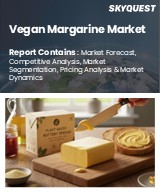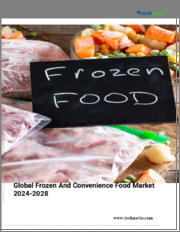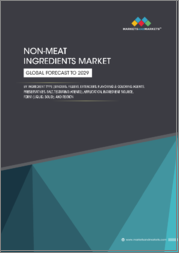
|
시장보고서
상품코드
1836333
세계의 편의식품 시장 예측(-2032년) : 제품별, 유효기한별, 포장 형태별, 가격별, 유통 채널별, 최종사용자별, 지역별 세계 분석Convenience Foods Market Forecasts to 2032 - Global Analysis By Product, Shelf Life, Packaging Format, Price Tier, Distribution Channel, End User and By Geography |
||||||
Stratistics MRC에 의하면, 세계의 편의식품 시장은 2025년에 5,859억 달러에 이르고, 예측 기간 중 연평균 복합 성장률(CAGR) 8.1%로, 2032년에는 1조 107억 달러에 달할 전망입니다.
편의식품은 식사 준비에 필요한 시간, 노동력, 기술을 줄이기 위해 상업적으로 조리, 가공, 포장된 식품을 말합니다. 즉석식품, 즉석조리식품, 냉동식품, 통조림식품, 건조식품, 혼합식품 등이 있으며, 빠르고 간편한 식사를 원하는 현대인의 라이프 스타일에 부합하는 제품들입니다. 편의식품은 휴대가 간편하고, 유통기한이 길며, 사용 편의성을 중시하는 바쁜 소비자들 사이에서 인기가 높습니다. 편의 식품은 효율성과 접근성을 제공하는 반면, 가공 수준에 따라 영양가가 달라질 수 있으며, 더 건강하고 고급스러운 선택이 시장에서 점점 더 많이 이용되고 있습니다.
도시화와 바쁜 라이프스타일
맞벌이 가구의 급증과 시간에 쫓기는 일상은 식습관을 재구성하고 있습니다. 바로 먹을 수 있는 포맷과 휴대 가능한 패키지와의 통합으로 도심에서의 채택이 가속화되고 있습니다. 소매업체들은 늘어나는 수요에 대응하기 위해 선반 공간과 배송 옵션을 확대하고 있습니다. 시장 역학은 시장을 크게 끌어올릴 것으로 예측됩니다.
건강에 대한 우려와 부정적 인식
첨가물 방부제 및 초가공에 대한 인식이 높아지면서 소비자의 선택에 영향을 미치고 있습니다. 규제 당국의 감시와 클린 라벨에 대한 기대는 특정 카테고리에서 브랜드에 대한 신뢰를 떨어뜨리고 있습니다. 제조업체는 미각의 유통기한과 영양가의 균형을 맞추는 문제에 직면해 있습니다. 조달과 배합의 투명성의 한계는 프리미엄 포지셔닝을 제약하고 있으며, 이러한 제약은 시장을 제약할 것으로 예측됩니다.
기술, 포장, 가공 혁신
전자 레인지용 소재와 스마트 씰링 시스템의 발전은 제품의 사용성을 획기적으로 변화시킵니다. 고압 처리 및 순간 냉동과의 통합은 영양 보존과 안전성을 촉진합니다. 브랜드는 자동화와 AI를 활용하여 생산과 개인화를 최적화하고 있습니다. 지속 가능한 패키징과 기능성 성분에 대한 수요가 제품 차별화를 촉진하고 시장을 견인하고 있습니다.
환경 및 포장의 지속가능성에 대한 압력
일회용 플라스틱과 다량의 폐기물 발생은 브랜드 평판과 규정 준수를 떨어뜨리고 있습니다. 각 제조업체들은 퇴비화 가능한 재활용 가능한 저환경 부하 소재를 채택하도록 압박을 받고 있습니다. 공급망의 복잡성과 비용에 미치는 영향은 친환경 포맷의 혁신을 제약하고 있습니다. 윤리적 소싱과 최소 포장에 대한 소비자의 요구는 제품 디자인을 재구성하고 있습니다. 이러한 제약은 편의식품 시장에 걸림돌이 될 것으로 예측됩니다.
코로나19의 영향:
코로나19 사태로 인해 소비자들이 안전과 보관 안정성을 우선시하면서 편의식품에 대한 수요가 급증했습니다. 록다운과 재택근무의 추세는 바로 먹을 수 있고 오래 보관할 수 있는 형태에 대한 관심을 높였습니다. 공급망의 혼란과 공황 구매로 인해 가용성과 유통이 일시적으로 감소했습니다. 팬데믹 이후 회복은 디지털 소매와 지역 밀착형 제조에 대한 투자를 촉진할 것입니다. 건강 의식과 가정 내 소비 습관이 편의점 카테고리에 대한 지속적인 진입을 촉진하고 있습니다. 이러한 변화는 편의식품 시장을 견인할 것으로 예측됩니다.
예측 기간 동안 저장 가능한 부문이 최대가 될 것으로 예측됩니다.
장기 보관이 가능한 조리된 식품 포맷에 대한 수요를 주도하는 저장 안정성 부문은 예측 기간 동안 가장 큰 시장 점유율을 차지할 것으로 예측됩니다. 스낵과 음료에 적용되면서 소매점 및 시설 채널에서 채택이 가속화되고 있습니다. 상온 포장 및 무방부제 기술과의 통합은 건강을 중시하는 소비자들 사이에서 호소력을 높이고 있습니다. 각 제조업체들은 다양한 입맛과 식생활 기호에 대응하기 위해 제품 라인을 확장하고 있습니다. 이커머스와 식료품 저장실의 재고 행동의 성장으로 인지도와 접근성이 높아지고 있습니다.
예측 기간 동안 1인용 부문이 가장 높은 CAGR을 나타낼 것으로 예측됩니다.
예측 기간 동안 1인 가구 부문은 개인화된 편의형 포맷에 대한 수요를 주도하며 가장 높은 성장률을 보일 것으로 예측됩니다. 1인 가구 증가와 유연한 근무형태로 인해 분량 조절이 가능한 편의식품 소비가 가속화되고 있습니다. 전자레인지용 용기 및 리실러블 팩과의 통합으로 사용 편의성과 신선도가 향상되었습니다. 브랜드는 디지털 플랫폼과 정기 구매 모델을 통해 개인 소비자를 타겟으로 삼고 있습니다. 다양하고 저렴한 가격과 최소한의 폐기물에 대한 수요가 싱글 서빙 형태의 혁신을 주도하고 있습니다. 이 분야는 편의식품 시장을 견인할 것으로 예측됩니다.
가장 큰 점유율을 차지하는 지역:
예측 기간 동안 북미는 도시화와 강력한 소매 인프라로 인해 가장 큰 시장 점유율을 차지할 것으로 예측됩니다. 미국과 캐나다는 슈퍼마켓의 온라인 플랫폼과 시설 채널을 통해 편의점 식품의 채택을 가속화하고 있습니다. 포장 및 클린 라벨 포맷의 혁신이 소비자의 관심을 불러일으키고 있습니다. 소매업체들은 개인 브랜드 상품과 건강 지향적 상품 라인을 확장하고 있습니다. 냉동 보관이 가능한 식품 및 스낵 카테고리에 대한 전략적 투자가 이 지역의 우위를 점하고 있습니다.
CAGR이 가장 높은 지역:
예측 기간 동안 아시아태평양은 도시화로 인한 가처분 소득 증가와 식습관 변화에 힘입어 가장 높은 CAGR을 보일 것으로 예측됩니다. 중국, 인도, 일본, 동남아시아는 대도시 및 1선 도시에서 편의점 식품에 대한 수요가 가속화되고 있습니다. 정부가 지원하는 식품 안전에 대한 노력과 디지털 소매업의 확대가 시장 접근을 촉진하고 있습니다. 맛의 형식과 포장의 지역적 혁신이 젊은 소비자들 사이에서 관련성을 높이고 있습니다. 콜드체인 물류와 스마트 벤딩에 대한 투자가 유통의 확장성을 높이고 있습니다.
무료 커스터마이징 서비스:
본 보고서를 구독하는 고객은 다음과 같은 무료 맞춤화 옵션 중 하나를 이용할 수 있습니다.
- 기업 소개
- 추가 시장 기업 종합 프로파일링(최대 3개사까지)
- 주요 기업의 SWOT 분석(3개사까지)
- 지역 세분화
- 고객의 관심에 따른 주요 국가별 시장 추정, 예측, CAGR(주: 타당성 확인에 따라 다름)
- 경쟁사 벤치마킹
- 제품 포트폴리오, 지리적 입지, 전략적 제휴를 기반으로 한 주요 기업 벤치마킹
목차
제1장 주요 요약
제2장 서문
- 개요
- 이해관계자
- 조사 범위
- 조사 방법
- 데이터 마이닝
- 데이터 분석
- 데이터 검증
- 조사 접근
- 조사 자료
- 1차 조사 자료
- 2차 조사 정보원
- 전제조건
제3장 시장 동향 분석
- 성장 촉진요인
- 성장 억제요인
- 기회
- 위협
- 제품 분석
- 최종사용자 분석
- 신흥 시장
- COVID-19의 영향
제4장 Porter의 Five Forces 분석
- 공급 기업의 교섭력
- 바이어의 교섭력
- 대체품의 위협
- 신규 진출업체의 위협
- 경쟁 기업간 경쟁 관계
제5장 세계의 편의식품 시장 : 제품별
- Ready-to-eat Meals
- Ready-to-cook
- 냉동식품
- 스낵
- 스위트 스낵 및 제과
- 인스턴트 라면 및 파스타
- 인스턴트 음료
- 베이커리 및 페이스트리
- 아침식사
- 수프
- 기타 제품
제6장 세계의 편의식품 시장 : 유효기한별
- 상온 보존 가능
- 냉장
- 냉동
제7장 세계의 편의식품 시장 : 포장 형태별
- 싱글 서브 팩
- 멀티 서브 팩
- 파우치
- 트레이 및 컵
- 기타 포장 형태별
제8장 세계의 편의식품 시장 : 가격별
- Economy
- Mid-market
- Premium
제9장 세계의 편의식품 시장 : 유통 채널별
- 슈퍼마켓 및 하이퍼마켓
- 편의점
- 온라인 소매
- 기존 식료품점
제10장 세계의 편의식품 시장 : 최종사용자별
- 가정
- 1인 가구
- 직장인
- 기관
- 기타 최종사용자
제11장 세계의 편의식품 시장 : 지역별
- 북미
- 미국
- 캐나다
- 멕시코
- 유럽
- 독일
- 영국
- 이탈리아
- 프랑스
- 스페인
- 기타 유럽
- 아시아태평양
- 일본
- 중국
- 인도
- 호주
- 뉴질랜드
- 한국
- 기타 아시아태평양
- 남미
- 아르헨티나
- 브라질
- 칠레
- 기타 남미
- 중동 및 아프리카
- 사우디아라비아
- 아랍에미리트(UAE)
- 카타르
- 남아프리카공화국
- 기타 중동 및 아프리카
제12장 주요 발전
- 계약, 파트너십, 협업 및 합작투자(JV)
- 인수 및 합병
- 신제품 발매
- 사업 확대
- 기타 주요 전략
제13장 기업 프로파일링
- Nestle S.A.
- The Kraft Heinz Company
- General Mills, Inc.
- Conagra Brands, Inc.
- Unilever PLC
- PepsiCo, Inc.
- Kellogg Company
- Campbell Soup Company
- McCain Foods Limited
- Hormel Foods Corporation
- Ajinomoto Co., Inc.
- Mondelez International, Inc.
- JBS S.A.
- Nomad Foods Limited
- Tyson Foods, Inc.
According to Stratistics MRC, the Global Convenience Foods Market is accounted for $585.9 billion in 2025 and is expected to reach $1010.7 billion by 2032 growing at a CAGR of 8.1% during the forecast period. Convenience foods are commercially prepared, processed, or packaged food products designed to reduce the time, effort, and skills required for meal preparation. These include ready-to-eat, ready-to-cook, frozen, canned, dried, or pre-mixed items that cater to modern lifestyles demanding quick and hassle-free meals. Convenience foods often emphasize portability, extended shelf life, and ease of use, making them popular among busy consumers. While they provide efficiency and accessibility, they may vary in nutritional value depending on processing levels, with healthier and premium options increasingly available in the market.
Market Dynamics:
Driver:
Urbanization & busy lifestyles
Rapid growth in dual-income households and time-constrained routines is reshaping eating habits. Integration with ready-to-eat formats and portable packaging is accelerating adoption across urban centers. Retailers are expanding shelf space and delivery options to meet rising demand. Manufacturers are investing in flavor innovation and portion control to enhance appeal, these dynamics are expected to significantly boost the market.
Restraint:
Health concerns & negative perceptions
Rising awareness of additives preservatives and ultra-processing is influencing consumer choices. Regulatory scrutiny and clean-label expectations are degrading brand trust in certain categories. Manufacturers face challenges in balancing taste shelf life and nutritional value. Limited transparency in sourcing and formulation is constraining premium positioning, these limitations are expected to constrain the market.
Opportunity:
Innovations in technology, packaging & processing
Advancements in microwaveable materials and smart sealing systems are transforming product usability. Integration with high-pressure processing and flash-freezing is fostering nutrient retention and safety. Brands are leveraging automation and AI to optimize production and personalization. Demand for sustainable packaging and functional ingredients is propelling product differentiation, boosting the market.
Threat:
Environmental & packaging sustainability pressures
Single-use plastics and high waste generation are degrading brand reputation and regulatory compliance. Manufacturers face pressure to adopt compostable recyclable and low-impact materials. Supply chain complexity and cost implications are constraining innovation in eco-friendly formats. Consumer demand for ethical sourcing and minimal packaging is reshaping product design. Such constraints are expected to hinder the convenience foods market.
Covid-19 Impact:
The Covid-19 pandemic accelerated demand for convenience foods as consumers prioritized safety and shelf stability. Lockdowns and remote work trends boosted interest in ready-to-eat and long-lasting formats. Supply chain disruptions and panic buying temporarily degraded availability and distribution. Post-pandemic recovery is fostering investment in digital retail and localized manufacturing. Health awareness and home-based consumption habits are propelling sustained engagement with convenience categories. These shifts are expected to propel the convenience foods market.
The shelf-stable segment is expected to be the largest during the forecast period
The shelf-stable segment is expected to account for the largest market share during the forecast period driving demand for long-lasting ready-to-eat formats. Applications in snacks meals and beverages are accelerating adoption across retail and institutional channels. Integration with ambient packaging and preservative-free technologies is fostering appeal among health-conscious consumers. Manufacturers are expanding product lines to meet diverse taste and dietary preferences. Growth in e-commerce and pantry stocking behavior is boosting visibility and access.
The single-person segment is expected to have the highest CAGR during the forecast period
Over the forecast period, the single-person segment is predicted to witness the highest growth rate drive demand for personalized convenience formats. Rising solo living and flexible work routines are accelerating consumption of portion-controlled and quick-prep meals. Integration with microwaveable containers and resealable packs is fostering usability and freshness. Brands are targeting individual consumers through digital platforms and subscription models. Demand for variety affordability and minimal waste is propelling innovation in single-serve formats. This segment is expected to propel the convenience foods market.
Region with largest share:
During the forecast period, the North America region is expected to hold the largest market share driven by urbanization and strong retail infrastructure. United States and Canada are accelerating adoption of convenience foods across supermarkets online platforms and institutional channels. Innovation in packaging and clean-label formats is fostering consumer engagement. Retailers are expanding private label offerings and health-oriented product lines. Strategic investment in frozen shelf-stable and snack categories is boosting regional dominance.
Region with highest CAGR:
Over the forecast period, the Asia Pacific region is anticipated to exhibit the highest CAGR propelled by urbanization rising disposable income and changing dietary habits. China India Japan and Southeast Asia are accelerating demand for convenience foods across metro and tier-1 cities. Government-backed food safety initiatives and digital retail expansion are fostering market access. Local innovation in flavours formats and packaging is boosting relevance among younger consumers. Investment in cold chain logistics and smart vending is propelling distribution scalability.
Key players in the market
Some of the key players in Convenience Foods Market include Nestle S.A., The Kraft Heinz Company, General Mills, Inc., Conagra Brands, Inc., Unilever PLC, PepsiCo, Inc., Kellogg Company, Campbell Soup Company, McCain Foods Limited, Hormel Foods Corporation, Ajinomoto Co., Inc., Mondelez International, Inc., JBS S.A., Nomad Foods Limited and Tyson Foods, Inc.
Key Developments:
In July 2025, General Mills collaborated with HORMEL(R) BLACK LABEL(R) to create a unique Cinnamon Toast Crunch Bacon Flavored Cereal, blending the popular cereal's taste with bacon flavor to appeal to adventurous consumers. General Mills partnered with Totino's to launch a pizza-flavored cereal, combining savory and sweet elements in a limited-edition product.
In May 2024, Nestle introduced Vital Pursuit, a new line of frozen foods tailored for individuals using GLP-1 weight loss medications like Ozempic and Wegovy. The product range includes high-protein, fiber-rich meals such as protein pasta, sandwich melts, and pizzas, all priced under $5 and designed to align with reduced appetite associated with these medications.
Products Covered:
- Ready-to-eat Meals
- Ready-to-cook
- Frozen Meals
- Savory Snacks
- Sweet Snacks & Confections
- Instant Noodles & Pasta
- Instant Beverages
- Bakery & Pastry
- Breakfast Foods
- Soups
- Other Products
Shelf Lifes Covered:
- Shelf-stable
- Refrigerated
- Frozen
Packaging Formats Covered:
- Single-serve Packs
- Multi-serve Packs
- Pouches
- Trays / Cups
- Other Packaging Formats
Price Tiers Covered:
- Economy
- Mid-market
- Premium
Distribution Channels Covered:
- Supermarkets & Hypermarkets
- Convenience Stores
- Online Retail
- Traditional Grocery Stores
End Users Covered:
- Households
- Single-person
- Working Professionals
- Institutional
- Other End Users
Regions Covered:
- North America
- US
- Canada
- Mexico
- Europe
- Germany
- UK
- Italy
- France
- Spain
- Rest of Europe
- Asia Pacific
- Japan
- China
- India
- Australia
- New Zealand
- South Korea
- Rest of Asia Pacific
- South America
- Argentina
- Brazil
- Chile
- Rest of South America
- Middle East & Africa
- Saudi Arabia
- UAE
- Qatar
- South Africa
- Rest of Middle East & Africa
What our report offers:
- Market share assessments for the regional and country-level segments
- Strategic recommendations for the new entrants
- Covers Market data for the years 2024, 2025, 2026, 2028, and 2032
- Market Trends (Drivers, Constraints, Opportunities, Threats, Challenges, Investment Opportunities, and recommendations)
- Strategic recommendations in key business segments based on the market estimations
- Competitive landscaping mapping the key common trends
- Company profiling with detailed strategies, financials, and recent developments
- Supply chain trends mapping the latest technological advancements
Free Customization Offerings:
All the customers of this report will be entitled to receive one of the following free customization options:
- Company Profiling
- Comprehensive profiling of additional market players (up to 3)
- SWOT Analysis of key players (up to 3)
- Regional Segmentation
- Market estimations, Forecasts and CAGR of any prominent country as per the client's interest (Note: Depends on feasibility check)
- Competitive Benchmarking
- Benchmarking of key players based on product portfolio, geographical presence, and strategic alliances
Table of Contents
1 Executive Summary
2 Preface
- 2.1 Abstract
- 2.2 Stake Holders
- 2.3 Research Scope
- 2.4 Research Methodology
- 2.4.1 Data Mining
- 2.4.2 Data Analysis
- 2.4.3 Data Validation
- 2.4.4 Research Approach
- 2.5 Research Sources
- 2.5.1 Primary Research Sources
- 2.5.2 Secondary Research Sources
- 2.5.3 Assumptions
3 Market Trend Analysis
- 3.1 Introduction
- 3.2 Drivers
- 3.3 Restraints
- 3.4 Opportunities
- 3.5 Threats
- 3.6 Product Analysis
- 3.7 End User Analysis
- 3.8 Emerging Markets
- 3.9 Impact of Covid-19
4 Porters Five Force Analysis
- 4.1 Bargaining power of suppliers
- 4.2 Bargaining power of buyers
- 4.3 Threat of substitutes
- 4.4 Threat of new entrants
- 4.5 Competitive rivalry
5 Global Convenience Foods Market, By Product
- 5.1 Introduction
- 5.2 Ready-to-eat Meals
- 5.3 Ready-to-cook
- 5.4 Frozen Meals
- 5.5 Savory Snacks
- 5.6 Sweet Snacks & Confections
- 5.7 Instant Noodles & Pasta
- 5.8 Instant Beverages
- 5.9 Bakery & Pastry
- 5.10 Breakfast Foods
- 5.11 Soups
- 5.12 Other Products
6 Global Convenience Foods Market, By Shelf Life
- 6.1 Introduction
- 6.2 Shelf-stable
- 6.3 Refrigerated
- 6.4 Frozen
7 Global Convenience Foods Market, By Packaging Format
- 7.1 Introduction
- 7.2 Single-serve Packs
- 7.3 Multi-serve Packs
- 7.4 Pouches
- 7.5 Trays / Cups
- 7.6 Other Packaging Formats
8 Global Convenience Foods Market, By Price Tier
- 8.1 Introduction
- 8.2 Economy
- 8.3 Mid-market
- 8.4 Premium
9 Global Convenience Foods Market, By Distribution Channel
- 9.1 Introduction
- 9.2 Supermarkets & Hypermarkets
- 9.3 Convenience Stores
- 9.4 Online Retail
- 9.5 Traditional Grocery Stores
10 Global Convenience Foods Market, By End User
- 10.1 Introduction
- 10.2 Households
- 10.3 Single-person
- 10.4 Working Professionals
- 10.5 Institutional
- 10.6 Other End Users
11 Global Convenience Foods Market, By Geography
- 11.1 Introduction
- 11.2 North America
- 11.2.1 US
- 11.2.2 Canada
- 11.2.3 Mexico
- 11.3 Europe
- 11.3.1 Germany
- 11.3.2 UK
- 11.3.3 Italy
- 11.3.4 France
- 11.3.5 Spain
- 11.3.6 Rest of Europe
- 11.4 Asia Pacific
- 11.4.1 Japan
- 11.4.2 China
- 11.4.3 India
- 11.4.4 Australia
- 11.4.5 New Zealand
- 11.4.6 South Korea
- 11.4.7 Rest of Asia Pacific
- 11.5 South America
- 11.5.1 Argentina
- 11.5.2 Brazil
- 11.5.3 Chile
- 11.5.4 Rest of South America
- 11.6 Middle East & Africa
- 11.6.1 Saudi Arabia
- 11.6.2 UAE
- 11.6.3 Qatar
- 11.6.4 South Africa
- 11.6.5 Rest of Middle East & Africa
12 Key Developments
- 12.1 Agreements, Partnerships, Collaborations and Joint Ventures
- 12.2 Acquisitions & Mergers
- 12.3 New Product Launch
- 12.4 Expansions
- 12.5 Other Key Strategies
13 Company Profiling
- 13.1 Nestle S.A.
- 13.2 The Kraft Heinz Company
- 13.3 General Mills, Inc.
- 13.4 Conagra Brands, Inc.
- 13.5 Unilever PLC
- 13.6 PepsiCo, Inc.
- 13.7 Kellogg Company
- 13.8 Campbell Soup Company
- 13.9 McCain Foods Limited
- 13.10 Hormel Foods Corporation
- 13.11 Ajinomoto Co., Inc.
- 13.12 Mondelez International, Inc.
- 13.13 JBS S.A.
- 13.14 Nomad Foods Limited
- 13.15 Tyson Foods, Inc.
















